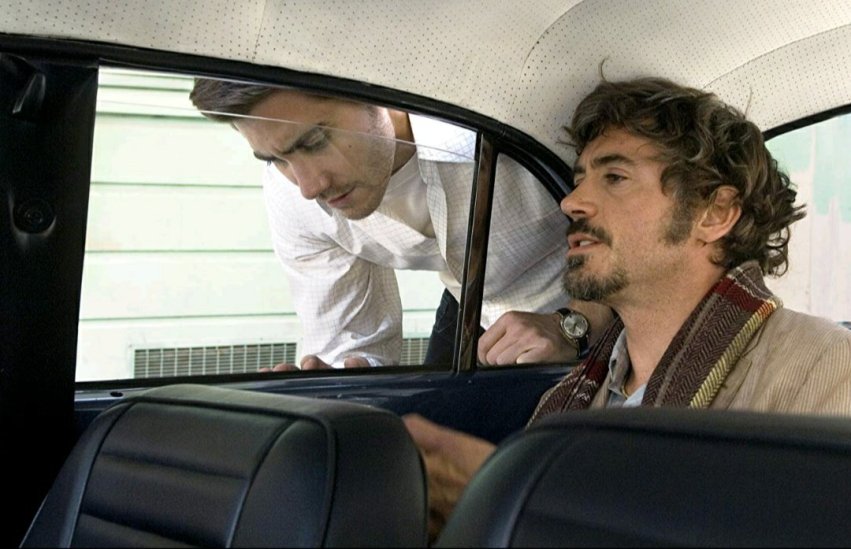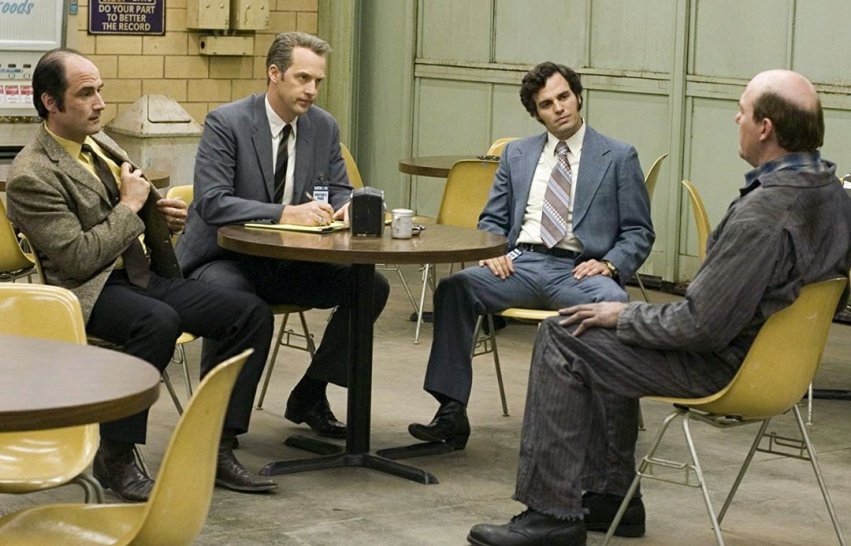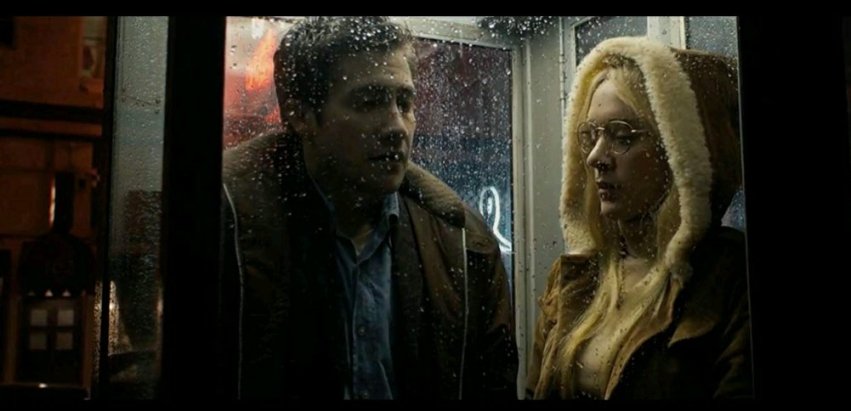
Mark Twain once wrote, “Truth is stranger than fiction, but it is because fiction is obliged to stick to possibilities; truth isn’t.” Zodiac is pretty much the perfect example of how apt this statement is. The Zodiac killer terrorised the San Francisco Bay Area, during the late 60’s and early 70’s, with a series of brutal murders.
The killings or attacks were usually followed by letters, ciphers and bloodstained clothing being sent to the police department, and to local SF newspaper publications. (Sounds Strange enough?) Zodiac provides us an insight into the details of the baffling criminal occurrences and the manhunt that followed.
There are several key players here. Robert Graysmith( Jake Gyllenhaal), who is slowly drawn towards the investigation, while working as a political cartoonist for SF Chronicle. And then proceeds to personally look into the case, as research for his book.
With the help of inspector Dave Toschi (Mark Ruffalo) of the SF Police department, a few years after the case has gone cold. Toschi’s own struggles and failings with the case in its initial period, alongside his partner Bill Armstrong (Anthony Edwards) constitutes the first half of the film. While Graysmith’s involvement constitutes the second half, set in the late 70s.
Read More From 2007: Superbad
There’s also Paul Avery (Robert Downey Jr.), a crime journalist for the SF chronicle. At one point he is sent a personally addressed threat by the Zodiac, in response to one of his many articles about the killer. Through these three and several other characters, we get to experience the fear, the paranoia, the mystery and the curiosity which resonated through the people in the years when Zodiac was active. The screenplay by James Vanderbilt, does a great job of balancing the factual details with emotionally impactful storytelling. And is based on a book by the real life Robert Graysmith.

Helming the reigns of this masterpiece, is the director extraordinaire, David Fincher. This is his 6th film, and arguably, his best. Fincher is the master of the visual language. He knows how to capture our imaginations, with a skilled precision, perfect focus shots and his lock-step camerawork. This is tracking, panning or moving the camera in a timed sync with the characters. He also knows how to incorporate seemingly innocuous details into the layers of the narrative and use them to build tension. It is the combination of these skills which allows Zodiac to be a perfect blend of an investigative drama and a mysterious whodunit story at the same time.
The pace never drops, the period details are near perfect, and so is the production design by Donald Graham Burt. Zodiac employs digital camera, and uses nearly 200+ special effects, to create the look and feel in sync with the film’s period setting. Probably the most complex of these is a digital recreation of the San Francisco neighbourhood of Washington and Cherry, as it looked during the 1970s. Which was the site of one of the Zodiac attacks.
Read More From 2007: Waitress
Of the several strong moments in the film, two are definitely worth mentioning. One of them is a reconstruction scene of one of the Zodiac attacks on a couple near Lake Berryessa in broad daylight. The quaint scenery, the bright lighting is in direct contrast with the brutality of the crimes. Despite no graphic imagery, its a scene which draws the audience in with its beauty. Only to leave us feeling hollow and deeply unsettled. It stays with you long after the movie ends.

Another scene is my personal favourite. In fact, almost any person who has watched Zodiac, if you talk to them about it, will mention the infamous basement scene. In barely two lines of dialogue, one of them is: “Mr. Graysmith, I do the posters myself”, the second one is, “Not a lot of people have basements in California”, the tension swells up.
This scene is the perfect example of how layering of the narrative, and intelligent storytelling, can minimise the dialogue requirements for exposition. It is also one of the most stressful scenes in a film, especially in a non-horror flick. Despite several rewatches, this scene always gets me. A testament to how well it is set up and written, but just as much to its near perfect framing and editing.
Read More From 2007: Once
Robert Downey Junior plays Paul Avery, and I mean what can I even say, he is funny, he is sad, he is arrogant and drunk half the time. This is the kind of character Mr. Downey can probably play in his sleep, its right up his alley.
Mark Ruffalo plays Dave Toschi with a humane vulnerability. He isn’t the macho policeman stereotype, he is man who believes in the system, and its fallacies can often be frustrating for him. Ruffalo’s pretty good at playing these kind guy parts – Spotlight, Avengers, Normal Heart – so no surprises there. A special mention to John Carroll Lynch, who has barely 7-8 minutes of screentime as Arthur Liegh Allen, one of the prime suspects in the investigation, he is really good, and will most certainly creep you out.
Saying that Jake Gyllenhaal is good in a performance is frankly redundant at this point. Zodiac spans over nearly two decades, and in this time, we see his character grow from this young and merely curious cartoonist, to a mature, driven, nearly obsessive author, he wants answers, and he will get them one way or another. Gyllenhaal embodies that growth with absolute perfection. But more importantly he knows how to find the balance between his intelligence, passion and the simplicity of this character.
Read More From 2007: Atonement
Zodiac stays true to its source material, attaining its mystery and paranoia from the truth. The film acknowledges that there are no clear answers, especially in cases like this. Instead of giving us a climactic showdown between the hero and the villain, it merely opts to present us with all the facts, the details of the investigation and the pitfalls and allows us to draw our own conclusions. Now this may not be a satisfactory ending for all its viewers, but I found the film’s realism worth appreciating.

Zodiac is near perfect film, in terms of casting, pacing, camerawork, editing and even score. And to think that when it was initially released, the movie was outperformed by a film called, Wild Hogs (look it up, it’s as bad as in sounds).
Over the years, Zodiac has developed a cult following, which I hope will continue to grow. It taps into our innermost fears, engages us, excites us, frustrates us. And by the end, we are knee deep into the pit of obsession, right next to Graysmith’s character. If you say this film didn’t turn you into a conspiracy theorist, at least for during its runtime, you are probably lying. Its intense, intelligent and possibly as Fincher-esque as it gets.


























1 thought on “Zodiac (2007) Movie review: Stranger than fiction…”
Comments are closed.